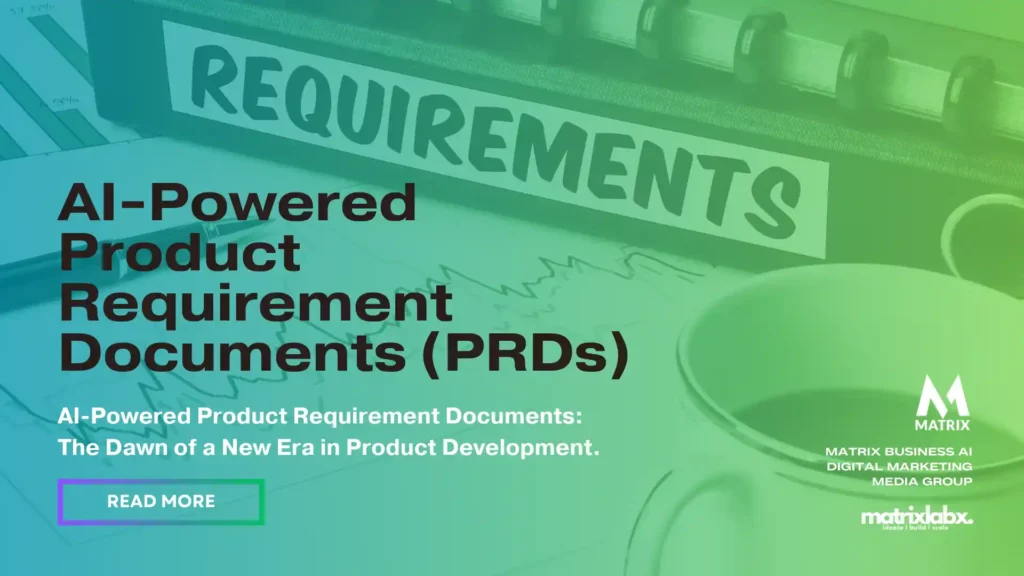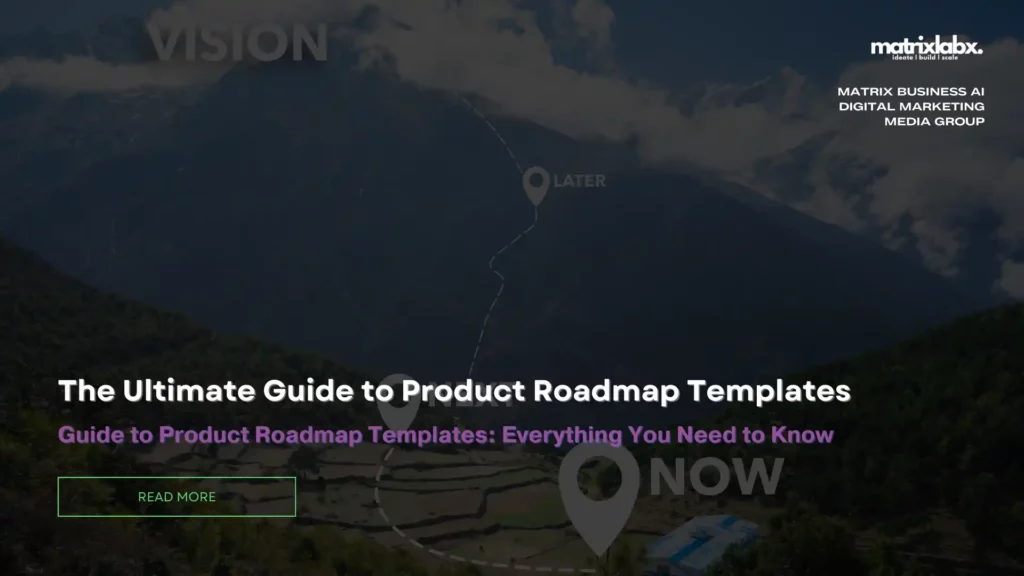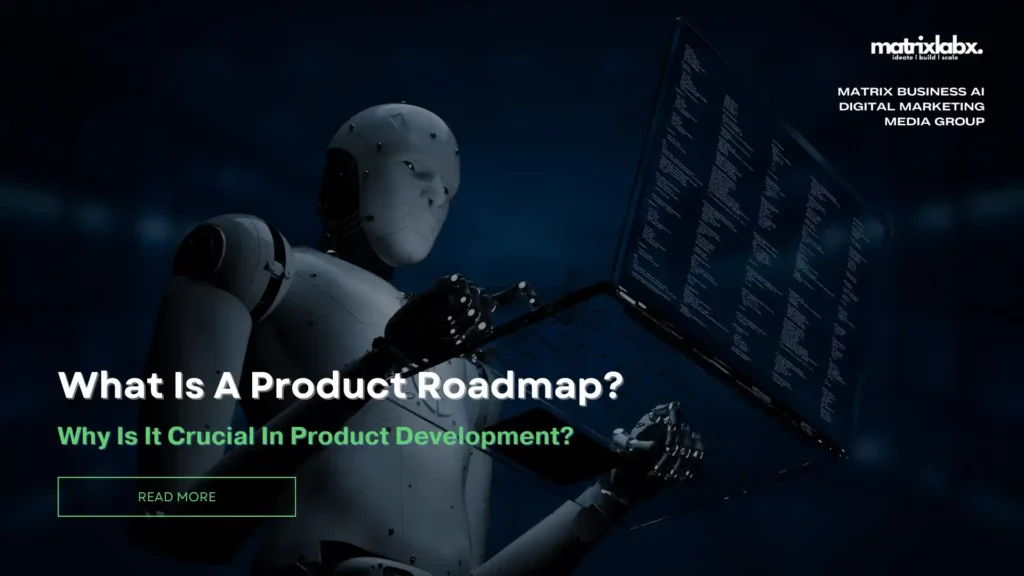Embracing the Future: AI-Powered Product Requirement Documents (PRDs)
Embracing the Future: AI-Powered Product Requirement Documents (PRDs).
A revolutionary change is underway in the rapidly evolving landscape of technology and product development. Integrating Artificial Intelligence (AI) into creating Product Requirement Documents (PRDs) marks a significant leap forward in how we approach building better, more efficient, and user-centric products.
This article delves into the transformative role of AI in shaping the future of PRDs, offering a glimpse into a world where human creativity and machine intelligence blend to innovate like never before.
Unveiling the AI Revolution in Product Planning
AI: A Catalyst for Enhanced Efficiency and Precision
The traditional process of crafting PRDs has been meticulous and time-consuming, often prone to human error and subjective biases. However, the advent of AI-powered tools in this domain has initiated a paradigm shift.
These sophisticated systems streamline the process and enhance the accuracy and relevance of the information contained within PRDs. By leveraging AI, product teams can process vast amounts of data, identify market trends, and predict user needs with unprecedented precision.
The Synergy of Human Ingenuity and Machine Intelligence
Collaborative Excellence in Product Design
The fusion of human expertise and AI’s analytical prowess is redefining the boundaries of product development.
This synergy enables teams to focus on creative and strategic aspects while AI handles data-driven insights and predictive analytics.
The result is a more dynamic, responsive, and efficient PRD process, paving the way for products that resonate with users and succeed in the competitive market.
Transforming Challenges into Opportunities
Overcoming Barriers and Setting New Standards
Integrating AI into the PRD process has its challenges.
Concerns regarding adopting new technologies, the learning curve involved, and the need for a cultural shift in organizations are real. However, these challenges are being rapidly transformed into opportunities as more companies witness the tangible benefits of AI-powered PRDs.
These tools set new standards in product development, encourage innovation, and drive a more data-driven, user-focused approach.
Looking Ahead: The Bright Future of AI in PRDs
Charting the Path for Tomorrow’s Innovations
As we look to the future, the role of AI in crafting PRDs is poised to grow exponentially. This growth promises more sophisticated and intuitive products and a new era of innovation where the limits of what can be achieved are continually expanded.
Embracing this AI-powered approach to PRDs is more than just a trend; it’s a strategic imperative for any organization aiming to stay at the forefront of product innovation and market relevance.
Join us as we explore the exciting journey of AI-powered PRDs, a journey that is reshaping the landscape of product development and setting the stage for the next wave of groundbreaking products.
Introducing several innovative tools has marked the rise of AI-powered Product Requirement Documents (PRDs), each offering unique features to streamline and enhance the PRD process.
One such tool is WriteMyPRD, powered by GPT-5, which is designed to assist in creating PRDs by generating a basic structure for users to fill in.
This tool simplifies the process by providing a structured format and various resources, including step-by-step guides and templates. However, it’s primarily accessible through Slack and may have limitations in handling complex PRDs or integrating with other tools.
Another notable AI-powered tool in this domain is Beam’s ‘Product Requirements Document’ tool. This comprehensive solution is designed to streamline the documentation of product specifications and PRD creation.
It requires basic information about the product and features being built to generate a PRD. This tool leverages advanced AI agents and multi-agents to map the process, saving significant time and effort. It also focuses on minimizing assumptions by asking users logical and pertinent questions, ensuring the creation of a detailed and tailored PRD.
These tools exemplify AI’s transformative impact in product development, particularly in creating and managing PRDs.
They offer a glimpse into a future where AI not only aids in automating mundane tasks but also ensures precision and efficiency in critical stages of product planning and execution.
Navigating the AI-PRD Revolution: Unforeseen Challenges for Businesses
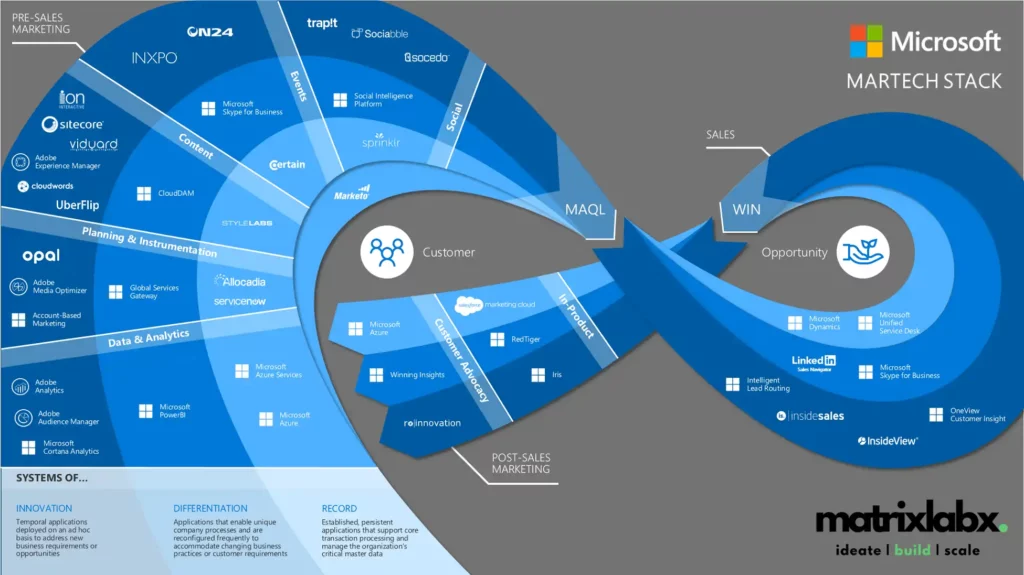
Integrating AI in creating Product Requirement Documents (PRDs) is a groundbreaking development, streamlining processes and offering unparalleled precision. However, as with any technological advancement, it brings its own set of challenges.
Understanding these hurdles is crucial for businesses to fully leverage AI-powered PRDs’ potential.
Challenge 1: Balancing Human Expertise with AI Precision
The Dilemma of Over-Reliance on Technology
While AI brings efficiency and data-driven insights, there’s a risk of over-reliance on technology. Businesses face challenges in balancing the intuitive, creative insights of human professionals with the precise, data-driven approach of AI.
This over-reliance could reduce critical thinking and problem-solving skills among teams, as they might become accustomed to AI doing the heavy lifting. The key lies in finding a harmonious balance where AI complements human ingenuity without replacing it.
Challenge 2: Adapting to Rapid Technological Changes
The Continuous Learning Curve
AI technology continually evolves, leading to constant updates and changes in the tools used for PRD creation. This rapid evolution can pose a challenge for businesses in terms of keeping their teams trained and up-to-date with the latest technologies.
There’s also the risk of tool obsolescence, where a tool or technology becomes outdated quickly, requiring businesses to invest continually in new solutions. Staying ahead of the curve requires a commitment to continuous learning and adaptation.
AI Precision: Optimize Decisions, Maximize Profits
Ditch guesswork. Embrace certainty. Our data-driven AI solutions deliver surgical insights and measurable results. Contact us today for a custom analysis.
Challenge 3: Ensuring Data Security and Privacy
Navigating the Complexities of Sensitive Information
AI-powered PRD tools process vast amounts of data, including potentially sensitive information. Ensuring the security and privacy of this data is a significant challenge.
To ensure compliance, businesses must navigate complex regulatory environments, particularly with laws like GDPR and CCPA. There’s also the risk of data breaches and leaks, which can severely affect a company’s reputation and customer trust. Implementing robust data security measures and being vigilant about privacy is crucial in this digital age.
Overcoming the Obstacles: A Strategic Imperative
Embracing Change while Mitigating Risks
To overcome these challenges, businesses must adopt a strategic approach. This involves investing in training and development to keep teams adept at using the latest AI tools, fostering a culture that values human creativity and technological efficiency, and implementing stringent data security measures.
By addressing these challenges head-on, companies can harness the full potential of AI in PRD creation, driving innovation and staying competitive in the rapidly evolving digital landscape.
The Future of AI-PRDs: A World of Possibilities
As we look toward the future, it’s clear that AI will continue to play a transformative role in product development. By understanding and overcoming the challenges posed by AI-powered PRDs, businesses can unlock new efficiency, innovation, and success levels.
The journey ahead is filled with opportunities for those ready to embrace change and navigate the complexities of this new technological era.
“The Rise of the AI-Powered PRD: How Machines Are Helping Us Build Better Products” is a blog that delves into the integration of Artificial Intelligence (AI) in the realm of Product Requirement Documents (PRDs).
This insightful piece answers crucial questions like who is driving this change, what exactly entails an AI-powered PRD, where this technology is being implemented, when it begins gaining traction, and why it’s essential for the future of product development.
Who: The Pioneers Behind AI-PRDs
The Driving Forces of Innovation
The blog reveals that tech innovators, forward-thinking companies, and product managers are spearheading the push towards AI-PRDs. These pioneers blend their expertise with AI’s capabilities to revolutionize how PRDs are created.
They represent a diverse array of industries, showcasing that the application of AI in product development is not limited to the tech sector alone. Their collective goal is to enhance product development efficiency, accuracy, and relevance.
What: Understanding AI-Powered PRDs
The Essence of Technological Integration
AI-powered PRDs are presented as advanced tools that use AI algorithms to process vast amounts of data, identify market trends, and anticipate customer needs.
The blog outlines how these tools significantly differ from traditional PRDs by offering data-driven insights, predictive analytics, and a more streamlined process. It emphasizes the role of AI in transforming PRDs from static documents into dynamic, responsive tools that adapt to changing market dynamics.
Where: The Global Adoption of AI-PRDs
AI’s Footprint in Product Development
The adoption of AI in creating PRDs is not confined to any single region. The blog highlights how businesses worldwide embrace this technology, from Silicon Valley startups to established corporations in Europe and Asia.
It shows a global movement towards more data-informed and efficient product development strategies.
When: The Emergence of AI in PRDs
Tracing the Timeline of Innovation
The blog traces the timeline of AI’s integration into PRDs, noting its relatively recent emergence but rapid adoption.
It points out key technological breakthroughs that have enabled this evolution, suggesting that the last few years have been pivotal in making AI a crucial part of the PRD process. This historical context helps readers appreciate the speed and significance of this technological shift.
Why: The Imperative for AI-PRDs
The Rationale Behind the Shift
Finally, the blog addresses the most critical question: why are AI-PRDs essential? It argues that in an increasingly competitive and fast-paced market, more than the traditional methods of creating PRDs are required.
AI-powered PRDs offer a way to keep pace with the rapid changes in consumer preferences and market conditions. They are a technological advancement and a strategic necessity for businesses aiming to innovate and stay relevant.
In conclusion, “The Rise of the AI-Powered PRD” comprehensively explores a significant technological trend in product development.
It educates about the current state of AI in PRDs and stimulates thinking about the future possibilities and implications of this convergence between human expertise and machine intelligence.
The Versatility of AI-Powered PRDs: Transforming Industries
The blog “The Rise of the AI-Powered PRD: How Machines Are Helping Us Build Better Products” highlights the revolutionary impact of AI in crafting Product Requirement Documents (PRDs).
Let’s explore three compelling use cases of AI-PRDs in different sectors, using the Before-After-Bridge (BAB) format to illustrate their transformative effects.
Stop Wasting Ads! Get Laser-Targeted Clicks (and Customers) with AI
Tired of ad duds? Get eyeballs on your brand with laser-focused online ads that convert. Click to unleash the power of targeted marketing!
Use Case 1: Enhancing Efficiency in Automotive Design
The Traditional PRD Quandary
In the automotive industry, the traditional approach to PRD involved extensive manual research and data analysis to determine customer preferences and market trends.
This process was time-consuming and often led to delays in product development, impacting the speed-to-market for new vehicle designs.
AI-Driven Precision
With the integration of AI in PRD creation, automotive companies can now quickly analyze vast amounts of data from various sources.
AI algorithms can identify emerging trends in customer preferences, environmental regulations, and technological advancements, enabling designers to create more targeted and innovative vehicle designs.
The Road to Innovation
AI-PRDs in automotive design bridge the gap between data analysis and product development, leading to faster and more efficient design processes.
This approach saves time and ensures that new vehicles meet the evolving needs of consumers and comply with regulations.
Use Case 2: Revolutionizing Product Development in Healthcare
The Challenge of Complexity
In the healthcare sector, developing new products such as medical devices or software involves navigating complex requirements, regulatory compliances, and patient needs.
Traditional PRD methods struggled to keep pace with these multifaceted demands, often leading to prolonged development cycles.
AI’s Comprehensive Analysis
AI-powered PRDs in healthcare can process and analyze clinical data, regulatory guidelines, and patient feedback simultaneously. This comprehensive analysis enables developers to create products that are not only innovative but also compliant and patient-centric.
Advancing Healthcare Solutions
Employing AI in PRD processes makes healthcare product development more streamlined and focused.
This leads to quicker turnaround times in bringing new, effective healthcare solutions to market, benefiting patient care and medical research.
Use Case 3: Streamlining Product Launches in Consumer Electronics
Balancing Innovation and Market Needs
Companies often need help to balance innovation with market demands in the fast-paced consumer electronics industry. Traditional PRD methods could not quickly adapt to the rapidly changing technology trends and consumer preferences, affecting product relevance.
AI’s Agile Response
With AI-powered PRDs, consumer electronics companies can instantly analyze global market trends, consumer feedback, and technological advancements.
This enables them to tailor their products to consumer needs while integrating the latest technological innovations.
Pioneering the Future of Electronics
Introducing AI in the PRD process bridges the gap between innovation and market demand. It allows companies to adapt their products to changing trends swiftly, ensuring their offerings are always at the cutting edge and highly relevant to consumers.
In summary, AI-powered PRDs are not just a technological upgrade but catalysts for change across various industries. AI is paving the way for faster, more efficient, and highly responsive product development processes by revolutionizing how we approach product requirement documents.
Embracing the Future: Implementing AI-Powered PRDs
The blog “The Rise of the AI-Powered PRD: How Machines Are Helping Us Build Better Products” showcases the potential of AI in revolutionizing product requirement documents (PRDs). Implementing AI in PRD processes may seem daunting, but the right approach can be a game-changer for your business. Here’s a step-by-step guide to help you navigate this transformation.
Step 1: Understanding the AI-PRD Landscape
Laying the Groundwork
Before diving into the implementation, it’s essential to understand what AI PRDs are and how they differ from traditional PRDs. This involves researching the latest AI technologies and tools available for PRD creation.
You should familiarize yourself with the capabilities of AI in analyzing data, predicting trends, and generating insights that can inform your product development.
Step 2: Assessing Your Needs and Resources
Tailoring the AI Solution to Your Business
Every business has unique needs and resources. Assess your current PRD process, identify the gaps or challenges, and determine what you want to achieve with AI integration.
This step is crucial in selecting the right AI tool or platform that aligns with your business goals, budget, and technical capabilities.
Step 3: Choosing the Right AI-PRD Tool
Navigating the Market
With a clear understanding of your requirements, explore the different AI-PRD tools available in the market. Look for tools that offer user-friendly interfaces, integrate well with your existing systems, and provide robust data analysis and reporting features.
It’s also wise to read reviews, seek recommendations, and try out demos or trial versions before deciding.
Step 4: Training and Onboarding
Empowering Your Team
Once you’ve selected an AI-PRD tool, the next step is to train your team. Ensure they understand how to use the tool effectively and maximize its features.
This might involve formal training sessions, workshops, or working with the tool’s customer support for guidance. The goal is to ensure a smooth transition and encourage your team to embrace the new technology.
Step 5: Integration and Continuous Improvement
Putting AI to Work
Integrate the AI-PRD tool into your product development process. Start using it for a small project or a single aspect of your PRD process to test its effectiveness.
Gather feedback from your team and monitor the performance of the tool. Use this feedback to refine and improve your approach continuously. Remember, integrating AI into your processes is not a one-time event but an ongoing journey toward innovation and efficiency.
The Road Ahead: Embracing AI-PRDs
Implementing AI-powered PRDs is a transformative step towards modernizing your product development process. By following these steps, you can harness the power of AI to create more accurate, efficient, and dynamic PRDs. This journey enhances your product planning and positions your business as a forward-thinking player in an increasingly competitive market. As you embark on this exciting path, remember that the key to success lies in continuous learning, adaptation, and collaboration with your team.
The AI-PRD Revolution: A Synopsis of Strategic Advancement
The blog post “The Rise of the AI-Powered PRD: How Machines Are Helping Us Build Better Products” offers an enlightening journey into AI-integrated Product Requirement Documents (PRDs).
This transformation is a technological upgrade and a strategic revolution, reshaping how businesses approach product development.
The AI-PRD Phenomenon: A Game-Changer in Product Development
Redefining Efficiency and Accuracy
The integration of AI in PRDs marks a significant shift from traditional methods. AI-PRDs bring unparalleled efficiency and accuracy in analyzing market trends, consumer behaviors, and technological advancements.
This shift ensures that businesses can craft products that are not only innovative but also closely aligned with market needs. The enhanced efficiency in the PRD process reduces time to market, offering a critical competitive edge.
Unleashing Creativity: The Human-AI Synergy
Enhancing Human Expertise with AI Insights
One of the most compelling aspects highlighted in the blog is the synergy between human creativity and AI’s analytical prowess.
While AI provides data-driven insights and predictive analytics, the human touch adds a layer of creativity and strategic thinking. This combination leads to more innovative and customer-focused products, allowing businesses to stand out in a crowded marketplace.
AI-PRDs: The Strategic Edge in Various Industries
A Universal Tool for Diverse Sectors
The blog illustrates the universal applicability of AI-PRDs across various industries, from automotive to healthcare and consumer electronics.
Each industry benefits uniquely from AI-PRDs, whether through faster design processes in automotive, patient-centric solutions in healthcare, or trend-responsive products in consumer electronics.
This versatility demonstrates that AI-PRDs are not just a passing trend but a vital tool for any industry looking to innovate.
Implementing AI-PRDs: A Step-by-Step Approach
Empowering Businesses for the Future
The post also provides a practical guide on implementing AI-PRDs, emphasizing the need to understand AI-PRD tools, assess business needs, choose the right tool, train teams, and integrate the tool into existing processes.
This step-by-step approach demystifies the process, making it accessible for businesses of all sizes and sectors.
The Future Is Now: Embracing AI-PRDs for Success
The rise of AI-PRDs represents a pivotal moment in product development. Businesses that embrace this technology stand to gain a significant advantage in efficiency, innovation, and market responsiveness.
As we look to the future, AI-PRDs will continue to evolve, offering even more sophisticated capabilities. The key for businesses is to stay ahead of the curve, continuously adapt, and leverage the power of AI-PRDs to create products that meet and exceed market expectations.
In essence, “The Rise of the AI-Powered PRD” is more than just a blog post; it’s a call to action for businesses to harness the power of AI in product development.
By doing so, they can achieve a competitive advantage, foster innovation, and redefine their approach to creating products that resonate with their customers and lead their industries.
As the marketing manager for MatrixLabX, I’m thrilled to introduce AIProdPad, our latest innovation designed to revolutionize how businesses create Product Requirement Documents (PRDs).
AIProdPad is not just a tool; it’s a game-changing solution that promises to make product development faster, better, and more cost-effective. Here’s how:
Transforming PRD Creation with AIProdPad
1. Accelerating the Development Process
AIProdPad leverages advanced AI algorithms to streamline the PRD process. It can analyze market data, customer feedback, and industry trends at an unprecedented speed. This means that what used to take weeks of manual research and analysis can now be accomplished in hours.
The result is a significant reduction in the time-to-market for new products, giving your business a competitive edge in rapidly evolving markets.
2. Enhancing Product Quality with Data-Driven Insights
One of the standout features of AIProdPad is its ability to provide deep, data-driven insights. It goes beyond surface-level analysis, delving into customer needs, preferences, and behaviors.
By harnessing this information, businesses can develop products more closely aligned with market demands and customer expectations, improving overall product quality.
3. Cost-Effective Product Development
Developing a comprehensive PRD requires substantial resources, including a team of analysts and researchers. AIProdPad reduces these requirements by automating the most labor-intensive aspects of PRD creation.
This automation saves time and significantly reduces the costs associated with product development. Businesses can allocate these saved resources to other areas, such as product innovation or marketing.
4. Easy Integration and User-Friendly Interface
AIProdPad is designed to be seamlessly integrated into your existing workflow. Its user-friendly interface ensures teams can easily adapt to and utilize the tool without extensive training.
This ease of use and integration eliminates potential disruptions in your product development cycle and facilitates a smoother transition to AI-enhanced processes.
5. Continuous Learning and Improvement
AIProdPad is built on a platform that continuously learns and evolves. It incorporates feedback from its usage to improve its algorithms, ensuring it remains at the cutting edge of AI technology.
This means the tool you use today will be even more powerful tomorrow, constantly enhancing its capability to generate insightful and effective PRDs.
Want Better Lead Conversions?
Leads that convert like magic? It’s not sorcery; it’s our AI-powered system.
The Future of Product Development with AIProdPad
In conclusion, AIProdPad from MatrixLabX is more than just an AI tool; it’s a strategic partner in your product development journey.
By accelerating the PRD process, enhancing product quality, reducing costs, offering easy integration, and continuously improving, AIProdPad is set to redefine how businesses approach product development.
Embrace AIProdPad and be part of the future where better products are developed faster and more affordably.
